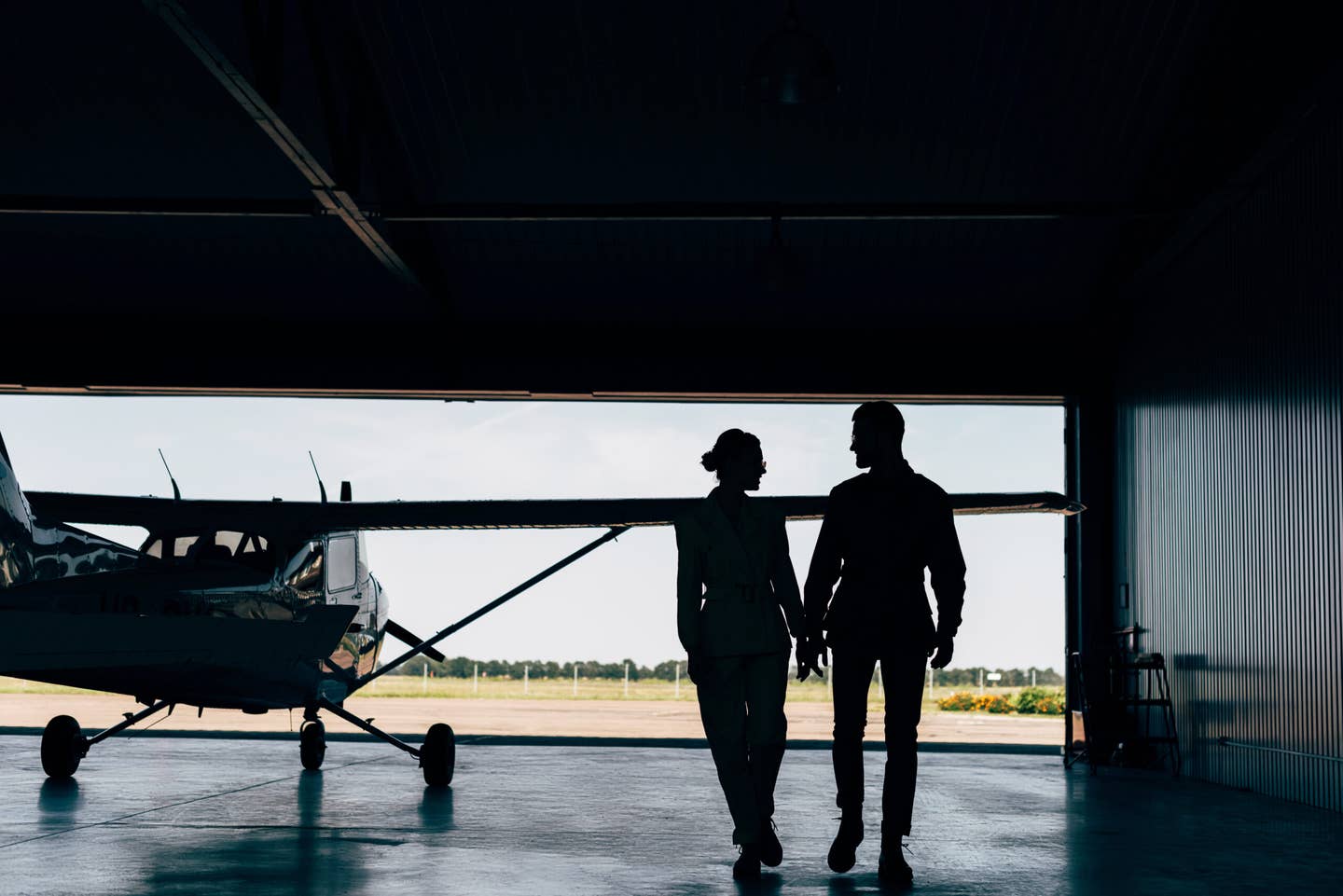Finding a Hangar Can Be Much Harder Than Finding an Airplane
Pro tip: Pilots should start hangar hunting long before the new airplane arrives.

Before the happy ending of hangar ownership, for most airplane owners, there’s some strife. [File Photo: Adobe Stock]
People often say buying an airplane is the biggest investment you will make except for your house. But that depends on the airplane—and the house. For pilots, this has become a joke because often they pay more for their aircraft than for their homes.
The joke truly stops being funny, though, when you begin looking for a home for your airplane.
Hangars, while not as expensive as a house, can easily cost more in monthly rent than your first apartment. And you really should have one if you want to minimize wear and tear to your airplane. Aircraft shoppers, including yours truly, eventually figure out that the hangar should come before the airplane. But that is far easier said than done, as hangar space can be frustratingly difficult to find, even if you have years of rent set aside in cash.
“Get used to answering the phone when you don’t recognize the number because it could be your big break.”
Surveys of aircraft owners over the past few years suggest a significant proportion, if not the majority of general aviation airports, have waiting lists for their hangars. Some require a deposit just to get onto the list, which might be several years long.
One of the general rules in looking for a hangar is that smaller, out-of-the-way airports are more likely to have space available. And there’s a bonus: those hangars tend to be the least expensive. In my experience, hangars are among the few markets that actually follow the basic supply and demand rules of Economics 101.
At the busy Atlanta Regional Airport in Georgia, also known as Falcon Field (KFFC), T hangars cost $450 a month, which is steep for the region, plus there’s a waiting list. Two and a half hours east (by car) at Thomson-McDuffie County Airport (KHQU), the price drops to $370, and when I called, there was at least one hangar available.
Norwich, N.Y., about 42 nm east of Ithaca, is home to Lt. Warren E. Eaton Airport (KOIC), where T hangars cost $210 per month. Compare that with $290 for a tie-down on the bleak, windblown tarmac at Essex County Airport (KCDW) in Caldwell, N.J., the field nearest to my home. Essex has 53 standard T hangars with 40-foot doors for $753 a month and 45 larger ones with 47-foot doors (to accommodate the winglets on your Cessna 414 or Piper Navajo) that cost $1,041.
Just for fun, I recently signed up for both lists. Shortly thereafter, I received an email from the manager letting me know I was 91st in line for a large hangar and 161st for a smaller one. I began to wonder how I could possibly live long enough to claim one of these cold, corrugated metal boxes.
Pilots have to keep reminding themselves that hangars are a scarce commodity. In many places they are becoming more so as airports raze old, worn-out hangars—and newer regulatory rules often make it difficult to replace them. Some people look into building their own, but that’s another story.
I could rent a hangar for $455 at Sky Manor Airport (N40) in Pittstown, N.J., which is at least an hour’s drive from home. But that has become the rule in many regions. There are several small airports in the same approximate radius that offer similar rates. Any closer to home and the price jumps. That’s called an economy, and aircraft owners just have to deal with it.
It is true that there are always people who have it even harder than you do. Pilots I know who live in New York City have traditionally kept their aircraft at upstate airports where costs are lower. But they might have to travel farther outside the city than they would like as the hangar shortage intensifies.
Two hours up the New York State Thruway is Kingston-Ulster Airport (20N), on the outskirts of Kingston, N.Y., which has become a hot spot in the last two years for city folks who have relocated during the pandemic.
Airport manager Todd Coggeshall says basic hangars cost $460 a month while heated ones cost $530, but there is “an extensive waiting list.” Plans include potential new hangar construction, but that could take years, in part because of changing rules regarding runway setbacks and other details. “It gets complicated,” Coggeshall says.
What’s a pilot to do? Keep driving? Sidney Municipal Airport (N23) is known for inexpensive hangar space but is another two hours beyond Kingston. The frustration could eventually cause one to give up, but the best advice is probably to be as active and vigilant as possible in your pursuit of a place to park your airplane.
Canvas all of the airports in your area, get on the waiting lists, and stay in regular contact with airport managers and other pilots—because sometimes spots open up unexpectedly. Get used to answering the phone when you don’t recognize the number because it could be your big break.
Finally, don’t sulk. After all, we are ultimately talking about flying your own airplane, which is hardly a sad outcome. Besides, having an airplane makes it nearly impossible for others to feel sorry for you.

Sign-up for newsletters & special offers!
Get the latest FLYING stories & special offers delivered directly to your inbox






